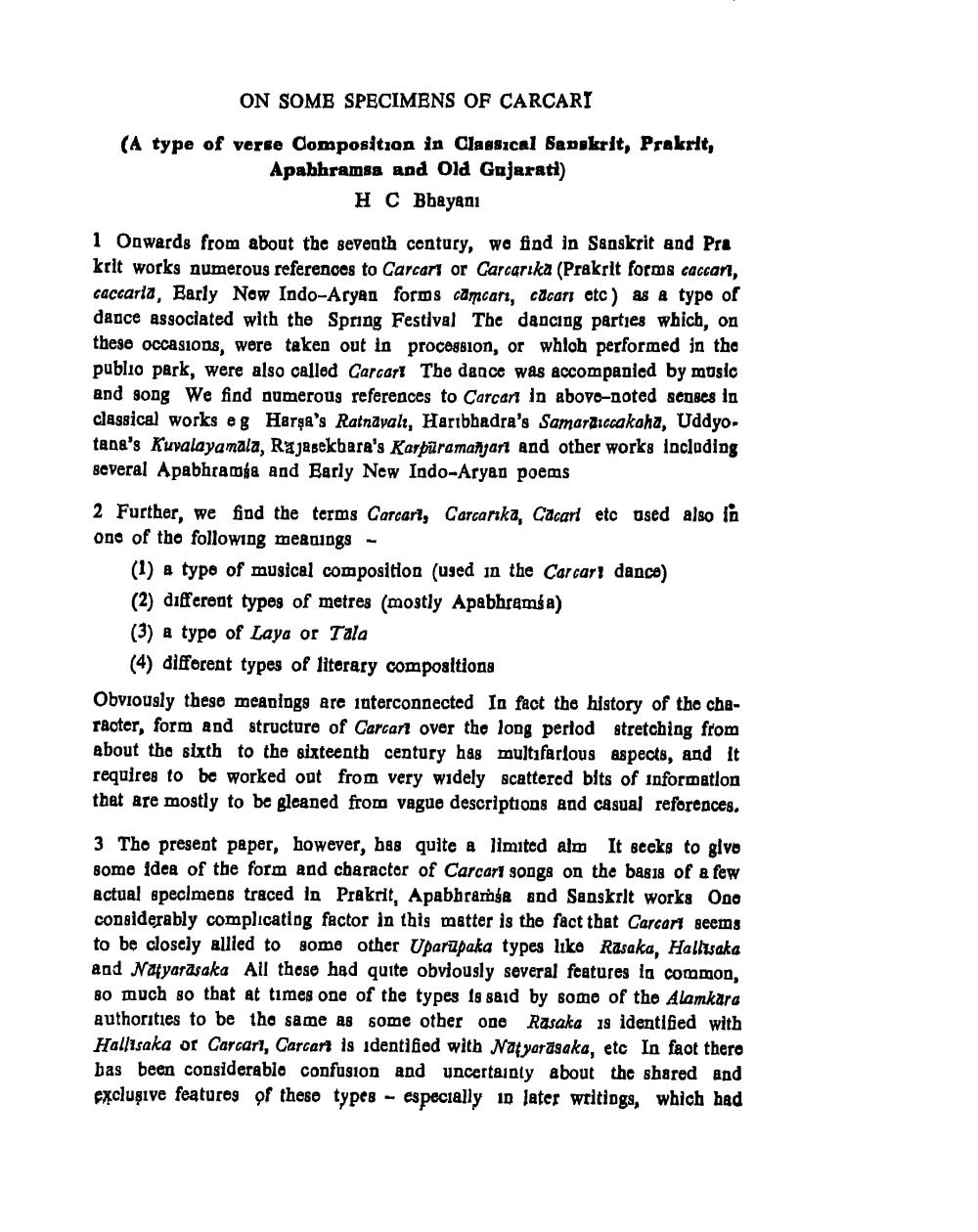________________
ON SOME SPECIMENS OF CARCARI
(A type of verse Composition in Classical Sapskrit, Prakrit,
Apabhramsa and Old Gujarati)
HC Bbayani
1 Onwards from about the seventh century, we find in Sanskrit and Pra krit works numerous references to Carcari or Carcarika (Prakrit forms caccan, caccarla, Early Now Indo-Aryan forms camcan, cacarı etc) as a typo of dance associated with the Spring Festival The dancing parties which, on these occasions, were taken out in procession, or whloh performed in the publio park, were also called Carcart The dance was accompanied by music and song We find numerous references to Carcari in abovo-noted senses in classical works eg Harşa's Ratnayalı, Haribhadra's Samaraiccakaha, Uddyotana's Kuvalayamala, Rajasekbara's Karbüramañjart and other works including several Apabhranga and Early New Indo-Aryan poems
2 Further, we find the terms Carcart, Carcarika, Cacari etc used also in one of the following meanings -
(1) a type of musical composition (used in the Carcari dance) (2) different types of metres (mostly Apabhramsa) (3) a type of Laya or Tala
(4) difforent types of literary compositions Obviously these meanings are interconnected In fact the history of the character, form and structure of Carcart over the long period stretching from about the sixth to the sixteenth century has multifarious aspects, and it requires to be worked out from very widely scattered bits of information that are mostly to be gleaned from vague descriptions and casual reforences.
3 Tho present paper, however, h88 quite a limited alm It seeks to give some idea of the form and character of Carcari songs on the basis of a few actual specimens traced in Prakrit, Apabbrama and Sanskrit works Ono considerably complicating factor in this matter is the fact that Carcart seems to be closely allied to some other Uparūpaka types like Rasaka, Hallisaka and Natyarāsaka All those had quite obviously several features la common, 80 much so that at times one of the types 19 said by some of the Alamkara authorities to be the same as some other one Rasaka 19 identified with Hallisaka or Carcari, Carcart is identified with Nat yarasaka, etc In fact thero bas been considerabio confusion and uncertainly about the shared and exclusive features of these types - especially 10 later writings, which had




